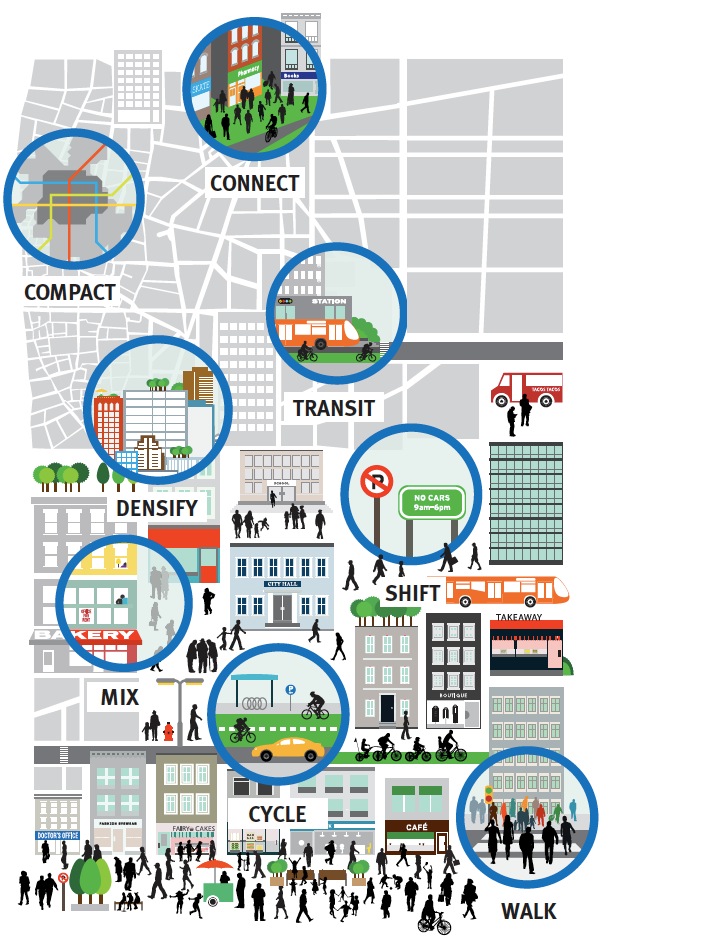INSTITUTE FOR TRANSPORTATION & DEVELOPMENT POLICY
Introduction
After decades of underinvestment in public transport, many
national and local governments today are re-focusing on improving
public transport to combat the social, economic and health
impacts of car traffic congestion on their cities. This is a positive
trend, moving away from the urban development form that many
cities adopted from the late 20th century and continues in many
cities today, in which ever longer and wider roads, separating
buildings and blocks from one another, make way for more and
more cars. Where public transport investment is taking place, such
as Mexico City, Guangzhou, and Rio de Janeiro, cities are striving
to get the most use from of it by building homes, jobs and other
services adjacent to this transit infrastructure.
The TOD Standard, built on the rich experience of many organizations around the world including our own, addresses development that maximizes the benefits of public transit while firmly placing the emphasis back on the users — people. We call this form of design “transit-oriented development” (TOD), and it marks a key difference from transit-adjacent development, which is simply development located next to transit corridors and stations.
TOD implies high quality, thoughtful planning and design of land use and built forms to support, facilitate and prioritize not only the use of transit, but the most basic modes of transport, walking and cycling.
Based on our research on sustainable communities and transport, undertaken during the development of the Principles of Transport in Urban Life and the Our Cities Ourselves exhibits, we outlined eight key principles to guide the development of TODs. The TOD Standard elaborates on these principles with performance objectives and metrics accessible to a non-technical audience, giving everyone from developers to interested local residents an opportunity to understand the essential components behind a successful TOD.
What is the TOD Standard?
The Standard is an assessment, recognition and policy guidance tool uniquely focused on integrating sustainable transport and land use planning and design. It is aimed at a broad range of urban development stakeholders, including governments, developers and investors, planners and designers, sustainable development advocates and interested citizens.
The principal uses include,
• assessing the walkability, cycle friendliness, and transit orientation of completed urban development projects,
• evaluating projects at the planning or design phases to identify gaps and opportunities for improvement,
• evaluating existing station areas or station area plans, to identify opportunities for improvement and investment, and
• guiding policy and regulations relevant to urban planning, transportation planning, land use, urban design and parking.
By creating a commonly applicable framework grounded in the key principles of transport in urban life, the Standard will be able to benchmark the performance of projects and plans against what is currently considered international best practice, such as Central Saint Giles in London, the Massena District in Paris, Hammarby Sjöstad in Stockholm and Liuun Xiaoqu in Guangzhou.

Download full version (PDF): TOD Standard
About the Institute for Transportation & Development Policy
go.itdp.org
“ITDP promotes transport solutions that reduce greenhouse gas emissions and air pollution, while improving urban livability and economic opportunity. Our projects inspire cities towards more environmentally and people-friendly transportation. Please click on one of our program areas to learn more.”
Tags: INSTITUTE FOR TRANSPORTATION & DEVELOPMENT POLICY, ITDP






 RSS Feed
RSS Feed